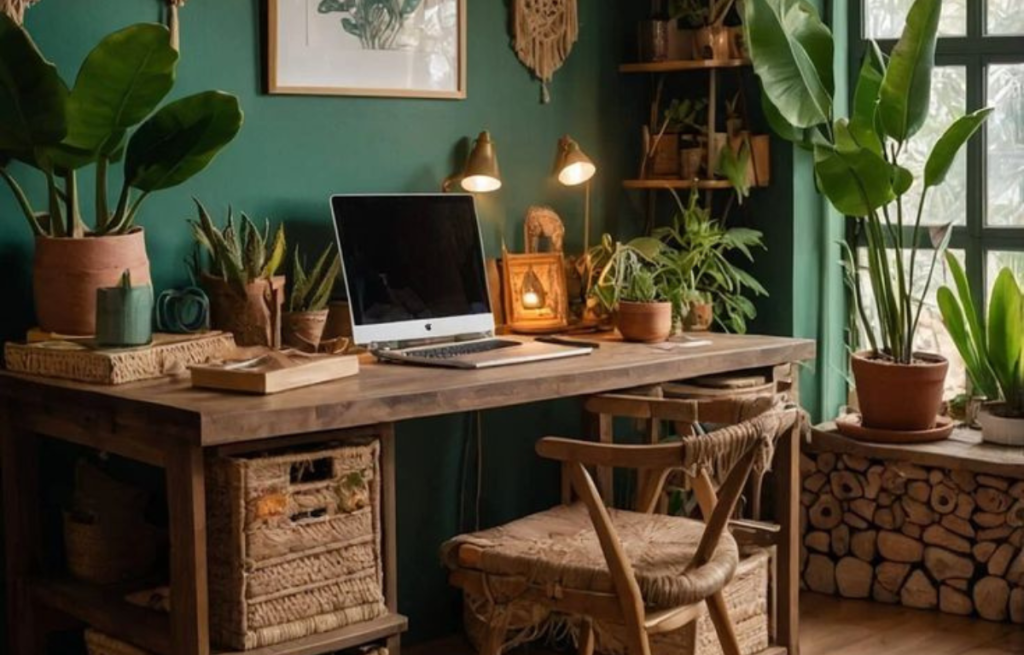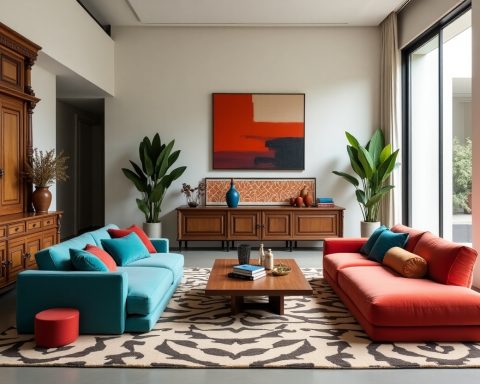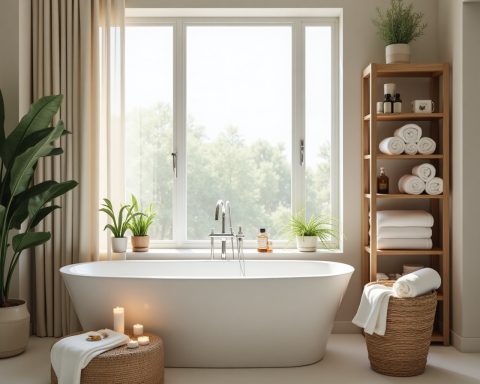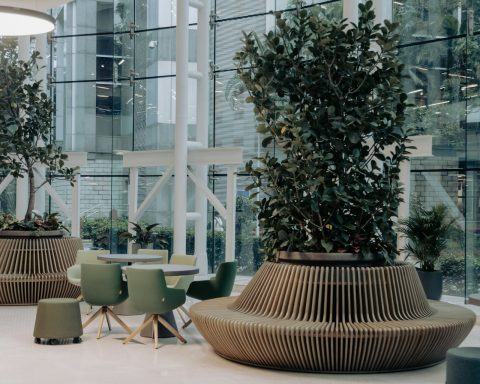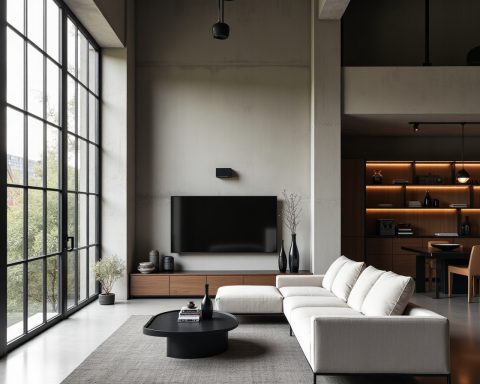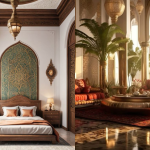What is Biophilic Design? An Introduction
Biophilic design is a groundbreaking approach to architecture and interior design that aims to forge a deeper connection between people and the natural world. At its core, this innovative design philosophy is based on the concept of biophilia—our innate human desire to seek out and bond with nature. By blending natural elements, organic materials, and thoughtfully planned spatial arrangements, biophilic design transforms indoor environments into vibrant spaces that echo the calming and restorative qualities of the outdoors.
In today’s fast-paced world, where urban living often disconnects us from nature, biophilic design offers a refreshing alternative that not only enhances aesthetic appeal but also contributes significantly to our overall well-being. This approach incorporates key elements such as natural light, indoor vegetation, water features, and raw, organic textures to create environments that boost mood, reduce stress, and promote a healthier lifestyle. Whether applied in modern homes, dynamic offices, or expansive public spaces, biophilic design creates a harmonious balance between built environments and nature.
By integrating expansive windows to harness natural sunlight, incorporating indoor gardens, and using eco-friendly materials, designers are reimagining spaces that support both physical health and mental clarity. The benefits extend beyond visual beauty—studies have shown that environments enriched with natural elements can lead to increased productivity, enhanced creativity, and a better quality of life. This design trend is also a sustainable choice, as it encourages the use of renewable resources and energy-efficient solutions, aligning with the growing global emphasis on environmental responsibility.
As you explore the concept of biophilic design in this article, you’ll discover how this holistic approach is not just a trend but a transformative movement in the world of interior design and architecture. Prepare to delve into the principles, benefits, and practical applications of biophilic design, and learn how you can integrate nature’s elements into your own spaces to create healthier, more inspiring environments.
Key Principles of Biophilic Design
Biophilic design is not just about decorating spaces with plants and nature-inspired art—it’s about integrating the essence of the natural world into every aspect of interior architecture. Understanding the key principles of biophilic design can help you create environments that are not only aesthetically pleasing but also contribute to improved well-being and productivity. Below are the three fundamental pillars of biophilic design, each offering a unique approach to bringing nature indoors.
1. Direct Connection with Nature
The first principle of biophilic design emphasizes the importance of a direct, tangible connection with nature. This means incorporating elements that allow you to experience nature firsthand, even when indoors. Here are some effective ways to achieve this:
- Indoor Plants and Green Walls: Integrating a variety of plants and creating living green walls helps purify the air, adds vibrant color, and fosters a calming atmosphere that soothes the mind.
- Water Features: Whether it’s a gently trickling fountain, a dynamic aquarium, or a reflective pool, water elements add movement and tranquility, creating a sense of serenity that mimics natural bodies of water.
- Natural Ventilation and Daylighting: Maximizing natural light through expansive windows and employing natural ventilation systems not only reduces reliance on artificial lighting but also enhances comfort, making the indoor environment feel more open and connected to the outdoors.
2. Indirect Connection with Nature
When a direct experience of nature isn’t feasible, biophilic design offers alternatives through indirect connections that evoke the feeling of being in nature. This approach relies on design elements that imitate natural forms and textures, making the environment feel organically linked to the outdoors:
- Natural Materials: Using materials like wood, stone, and bamboo introduces warmth and texture that echo the natural world, creating a tactile connection with nature.
- Biomorphic Patterns and Textures: Incorporating designs that mimic natural forms—such as patterns found in leaves, shells, or rock formations—can transform a space into a visual narrative of nature.
- Nature-Inspired Colors and Imagery: Utilizing a palette of colors drawn from the natural environment, combined with murals or wallpapers depicting serene landscapes, helps to create a soothing ambiance that reminds occupants of the outdoors.
3. Spatial Configurations that Evoke Nature
The way a space is organized can profoundly affect how occupants experience nature. This principle involves designing spatial arrangements that stimulate a sense of exploration, mystery, and refuge, akin to what one experiences in natural settings:
- Open Floor Plans with Layered Views: Creating expansive spaces with layered views encourages movement and exploration, offering glimpses of different perspectives much like encountering varied landscapes in nature.
- Nooks and Alcoves: Incorporating intimate corners and quiet retreats within larger spaces can provide areas for contemplation and relaxation, mirroring the hidden, restful spots found in natural settings.
- Prospect and Refuge: This design strategy balances open, visible areas (prospect) with more enclosed, secure spaces (refuge), ensuring that occupants can enjoy the vastness of their surroundings while still feeling safe and supported.
These strategies highlight how blending direct and indirect natural elements with thoughtful spatial configurations can redefine modern interiors—making them vibrant, sustainable, and deeply connected to the essence of nature.
Benefits of Biophilic Design
Biophilic design offers a multitude of benefits that go well beyond aesthetics. By incorporating elements of nature into built environments, this approach can significantly enhance our quality of life, well-being, and overall performance in daily activities. Here are some of the key benefits:
1. Improved Mental and Physical Health
Integrating natural elements into interior spaces has been shown to have profound effects on both mental and physical health. Exposure to natural light and indoor greenery can reduce stress, anxiety, and symptoms of depression, while simultaneously boosting cognitive functions such as concentration and memory. Natural light plays a crucial role in regulating circadian rhythms, which helps improve sleep quality and overall physical health. Additionally, the calming influence of nature-inspired environments supports emotional balance and well-being, making biophilic design an effective tool for creating healthier living and working spaces.
2. Increased Productivity and Creativity
Biophilic design is not only about creating visually appealing spaces—it also fosters environments that enhance productivity and creativity. Workspaces that feature ample natural light, indoor plants, and nature-inspired decor have been linked to improved focus, increased job satisfaction, and higher levels of employee engagement. Studies indicate that employees in biophilic work environments experience lower rates of absenteeism and are more motivated, resulting in enhanced creative thinking and problem-solving abilities. By stimulating a sense of well-being and reducing stress, biophilic design transforms ordinary workspaces into hubs of innovation and productivity.
3. Enhanced Air Quality and Sustainability
One of the remarkable benefits of biophilic design is its contribution to improved indoor air quality and environmental sustainability. Incorporating a variety of plants into interior spaces naturally filters the air, reducing indoor pollutants and enhancing overall air quality. Additionally, the use of eco-friendly, sustainable materials in design can help minimize the environmental impact of construction and renovation projects. Techniques such as passive solar design and natural ventilation further reduce energy consumption, making biophilic design a powerful strategy for promoting both personal health and environmental responsibility.
4. Stronger Community and Social Connections
Beyond individual health benefits, biophilic design has a significant impact on community dynamics and social interaction. Spaces that integrate natural elements encourage collaboration and communication, making them ideal for offices, schools, and public buildings. Shared green spaces and nature-inspired communal areas foster a sense of belonging and strengthen social bonds among occupants. Whether it’s a tranquil garden in a corporate lobby or an inviting green space in a community center, these environments promote mental restoration and create opportunities for social connection, ultimately enhancing community well-being and cohesion.
Embracing the benefits of biophilic design can transform any space into a vibrant, health-promoting environment. From improved mental and physical health to enhanced creativity, better air quality, and stronger community ties, the integration of nature into our living and working spaces is a powerful strategy for achieving a more balanced and sustainable lifestyle.
Practical Implementation of Biophilic Design
Integrating biophilic design into various environments not only elevates aesthetic appeal but also boosts well-being, productivity, and sustainability. Here’s an in-depth look at how to practically implement biophilic design in different settings:
1. Homes and Residential Spaces
Creating a nature-inspired sanctuary in your home is easier than you might think. Consider the following strategies to infuse biophilic design into residential spaces:
- Maximize Natural Light:
Install large windows, skylights, and glass doors to flood your living areas with natural light. This not only illuminates your space but also helps regulate your body’s natural circadian rhythms, improving sleep quality and overall health. - Incorporate Indoor Greenery:
Use indoor plants and vertical gardens to add a refreshing burst of nature. Houseplants improve air quality, reduce stress, and bring a vibrant, organic element into your home décor. - Opt for Natural Materials:
Choose furniture and surfaces crafted from natural materials like wood, stone, and bamboo. Wooden furniture and stone countertops provide tactile warmth and visual texture, creating a balanced, earthy ambiance. - Integrate Water Features:
Add indoor water installations such as fountains or small water walls. The sound of flowing water not only soothes the mind but also replicates the tranquility of natural outdoor environments. - Select Earthy Color Schemes:
Embrace color palettes that reflect the natural world, including earthy tones, greens, and blues. These colors evoke a sense of calm and help create a harmonious environment that feels connected to nature.
2. Workplaces and Offices
Transform your work environment into a dynamic, nature-infused space that stimulates productivity and creativity:
- Green Walls and Potted Plants:
Incorporate green walls or strategically placed potted plants to improve indoor air quality and bring a touch of nature into the office. This creates a refreshing visual break from digital screens and work-related stress. - Design for Daylight:
Structure workspaces to maximize exposure to natural light and provide views of the outdoors. Access to daylight enhances mood and concentration, leading to increased productivity. - Ergonomic, Natural Furniture:
Choose ergonomic office furniture made from natural or sustainable materials. Not only does this contribute to comfort and health, but it also reinforces the overall biophilic theme of the workplace. - Nature-Inspired Breakout Areas:
Design breakout areas or collaborative spaces with biophilic elements, such as natural textures, organic shapes, and greenery. These zones can serve as restorative retreats that spark creativity and foster team interaction.
3. Commercial and Public Spaces
In public and commercial environments, biophilic design can elevate user experience and foster community well-being:
- Rooftop Gardens and Green Facades:
Incorporate rooftop gardens and green facades into building designs to create lush, inviting exteriors that also offer environmental benefits such as improved air quality and reduced urban heat. - Courtyards and Open Atriums:
Design spacious courtyards and atriums that welcome natural light and facilitate cross-ventilation. These features not only create pleasant communal areas but also enhance the overall energy efficiency of the building. - Calming Water Installations:
Use water installations—such as reflective pools or indoor waterfalls—to cultivate a serene atmosphere. The sound and sight of water can serve as a natural stress reliever, promoting relaxation in busy public spaces. - Organic Spatial Layouts:
Implement natural pathways and organic, fluid layouts that mimic the unpredictable beauty of nature. These design choices encourage movement and exploration, making commercial spaces more engaging and user-friendly.
4. Urban Planning and Landscape Architecture
Biophilic design is equally transformative when applied on a larger scale in urban planning and public landscapes:
- Expand Urban Greenery:
Increase urban forests, parks, and green corridors to improve city livability. Well-planned green spaces offer residents a natural refuge, enhancing both physical health and mental well-being. - Invest in Green Infrastructure:
Support the development of rain gardens, bioswales, and other green infrastructure that manage stormwater and reduce urban runoff. These eco-friendly solutions help create more resilient and sustainable cities. - Create Pedestrian-Friendly Streets:
Design streetscapes that prioritize pedestrians with tree-lined walkways, shaded seating, and natural elements. Such environments encourage outdoor activity and social interaction, contributing to a healthier urban lifestyle. - Design Engaging Public Plazas:
Develop public plazas that feature a mix of natural elements, including seating areas, water features, and landscaped gardens. These spaces not only serve as community hubs but also enhance urban aesthetics and environmental quality.
Biophilic design is far more than an aesthetic trend—it is a vital strategy for enhancing human health, fostering creativity, and promoting environmental sustainability. By thoughtfully integrating natural elements into homes, workplaces, commercial areas, and urban landscapes, we create spaces that nurture both the body and mind. Whether it’s through maximizing natural light, incorporating lush greenery, or utilizing eco-friendly materials, the practical implementation of biophilic design can transform our built environments into vibrant, sustainable sanctuaries that truly resonate with the essence of nature.


